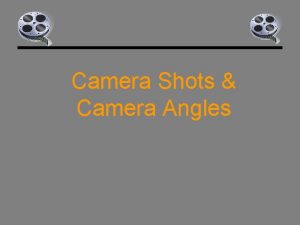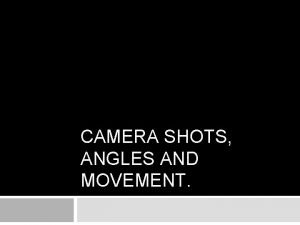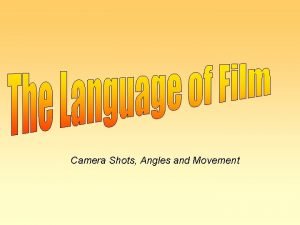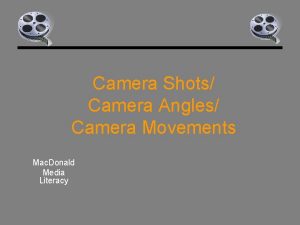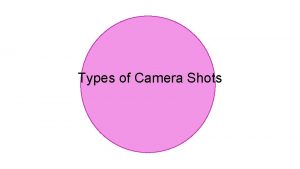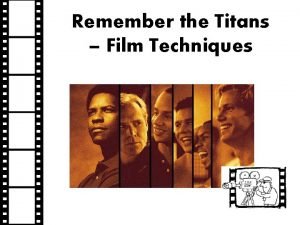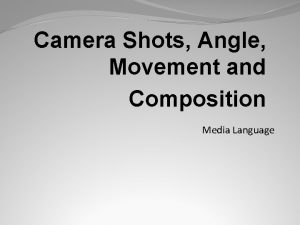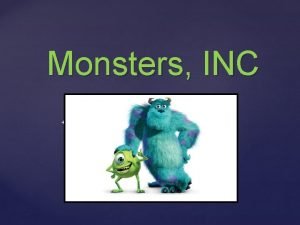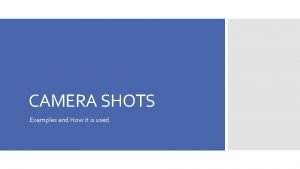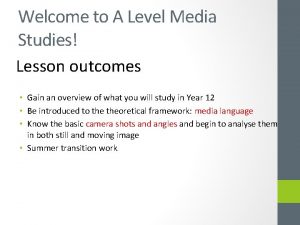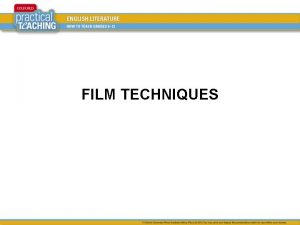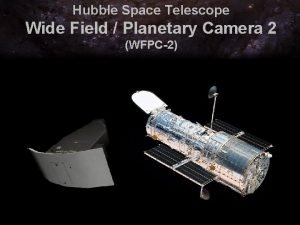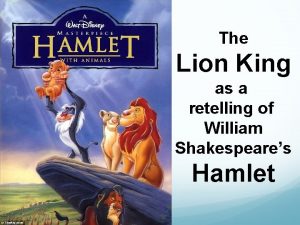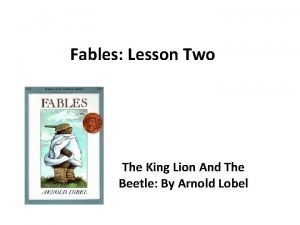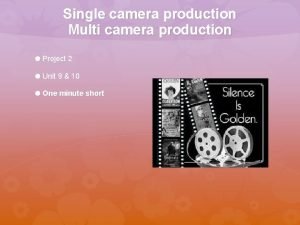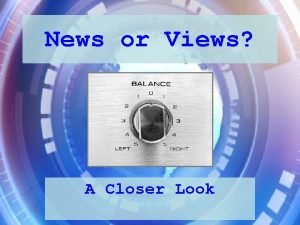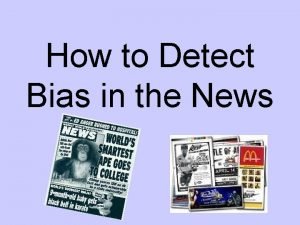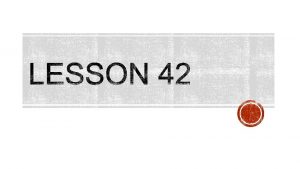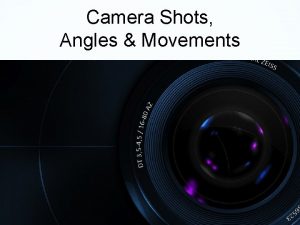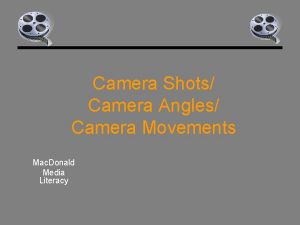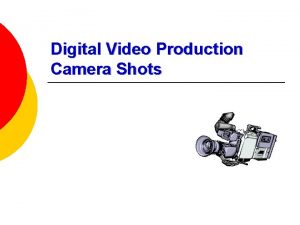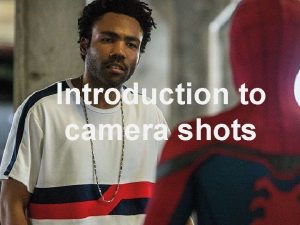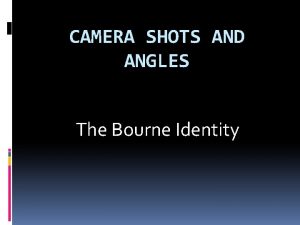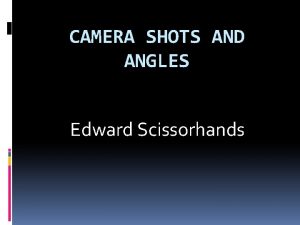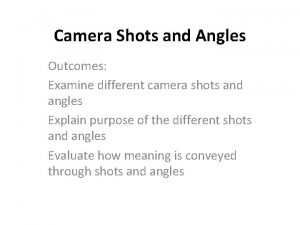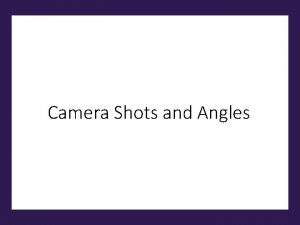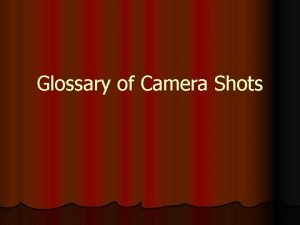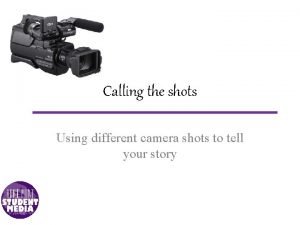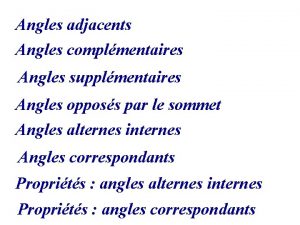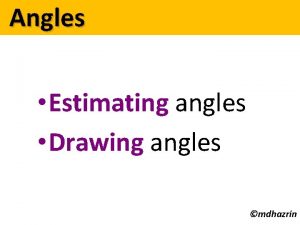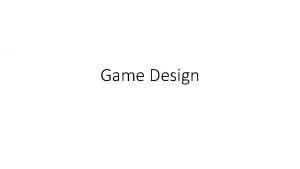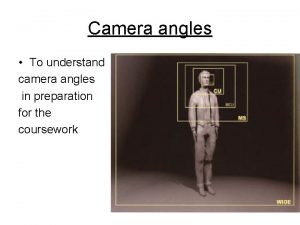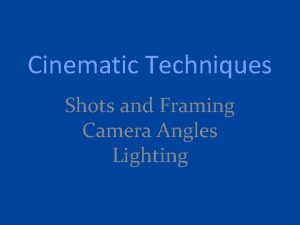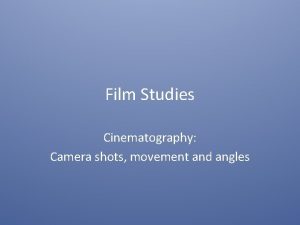CAMERA SHOTS AND ANGLES The Lion King Wide























- Slides: 23

CAMERA SHOTS AND ANGLES The Lion King

Wide Angle Shot Purpose to show: SETTING To set the scene (let us know where we are). Contains a lot of landscape and helps establish location and likely atmosphere/context. Often used at the beginning of a film or scene. Landscape when shown like this becomes symbolic or thematic.

Wide Angle Shot

LONG SHOT Purpose to show: ACTION This shot contains a fair amount of background, however figures are slightly more recognisable. This shot is often used for action. It allows us to see a big picture and mass movement

LONG SHOT

FULL SHOT Purpose to show: ACTION This shot does not contain the whole height of any figure in the frame (if it contains two figures it’s called a twoshot). Again this shot is primarily used for action and allows the audience to be more personally involved. Here it links the character to his/her physical setting/context.

FULL SHOT

MID SHOT Purpose to show: DIALOGUE The figures in this shot are seen from the waist up. Often characters talk in these shots as this what we would personally regard as a comfortable speaking distance.

MID SHOT

CLOSE UP Purpose to show: CHARACTER A close up gives us almost complete focus on a person’s face. This shot enables directors/actors to portray the emotions of characters and create atmosphere and feeling.

CLOSE UP

EXTREME CLOSE UP Purpose to show: DETAILS This shot is often used to highlight important symbols/ideas in a film.

EXTREME CLOSE UP

OVER SHOULDER SHOT Purpose to show: DIALOGUE Usually used when characters are in discussion. Allows the audience to get more of a feel for what character might be saying or hearing. It helps us to feel more involved in the dialogue. Reverse Angle Shot – alternate over the shoulder shot, shows viewpoint of the speaker and then the reaction of the listener.

OVER SHOULDER SHOT

POINT OF VIEW SHOT Purpose to show: INVOLVEMENT Sometimes called a subjective shot, this allows the audience to see the action from the point of view of a character. We feel personally involved.

POINT OF VIEW SHOT

HIGH ANGLE Purpose to show: ISOLATION This angle is from high looking down but not directly above. The main effect is to make the object look small and lacking in power. It suggests weakness of a character.

HIGH ANGLE

LOW ANGLE Purpose to show: POWER AND STATUS The camera is low and looking up at a figure or place. The main effect is to make the figure look large and powerful, suggesting dominance or status.

LOW ANGLE

EYE LEVEL Purpose to show: REALITY This is the shot that occurs when the camera is level with the object or figure. It is the angle that is most like a normal eye-view of the scene and tends to suggest a real life effect.

EYE LEVEL
 Camera shots and angles quiz
Camera shots and angles quiz Camera angle
Camera angle Types of shots
Types of shots Els camera shot
Els camera shot Ecu camera shot
Ecu camera shot Pov shot example
Pov shot example Remember the titans film techniques
Remember the titans film techniques 6 types of camera shots
6 types of camera shots Media camera shots
Media camera shots Camera shots
Camera shots Medium close up shot example
Medium close up shot example Camera shots media studies
Camera shots media studies Visual techniques in film
Visual techniques in film Properties of vertically opposite angle
Properties of vertically opposite angle Wide field and planetary camera 2
Wide field and planetary camera 2 Lion king william shakespeare
Lion king william shakespeare King lion and the beetle
King lion and the beetle The office single camera
The office single camera Camera moves
Camera moves Bias through placement examples
Bias through placement examples Bias by photos captions and camera angles
Bias by photos captions and camera angles Bias through selection and omission guiding questions
Bias through selection and omission guiding questions Lion king hamlet
Lion king hamlet Lion king sexism
Lion king sexism
